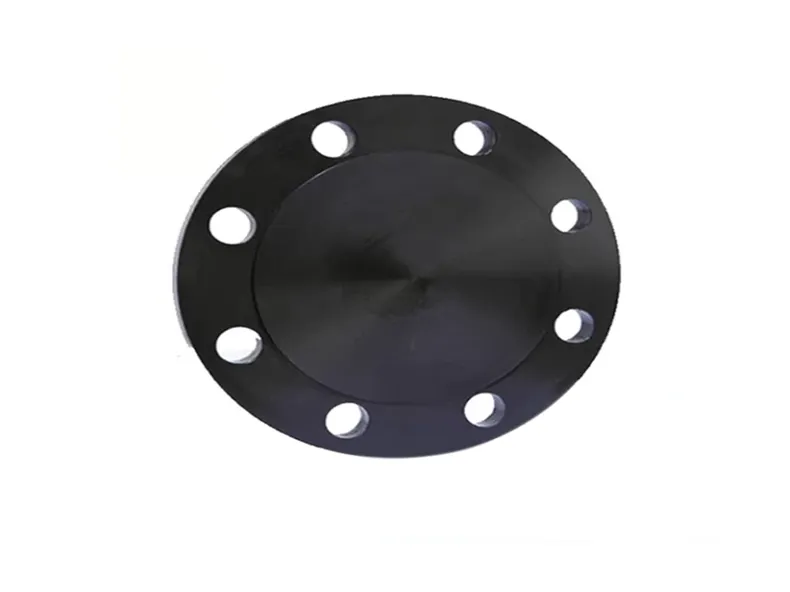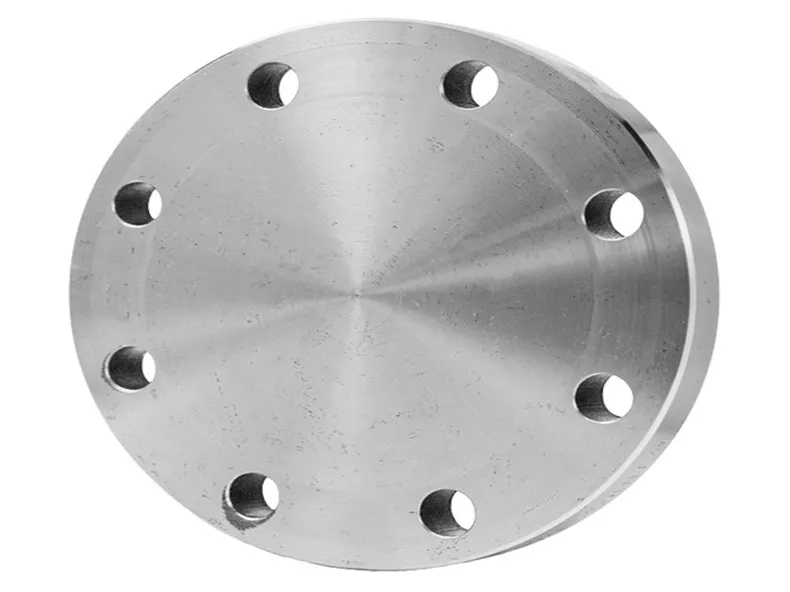A BL (Blind) flange, often questioned as “what is a BL flange,” is a specialized type of pipe flange designed to close the ends of a piping system, effectively sealing off a pipeline or valve. The defining characteristic of a BL flange is that it lacks a bore, which means it does not permit fluid to pass through, answering the query of “what is a BL flange” in terms of its function.
This makes a BL flange ideal for situations where a pipe or valve end needs to be securely closed to halt flow or for maintenance. Typically used in high-pressure scenarios, a BL flange is available in a range of materials, including carbon steel, stainless steel, and alloy steel, to meet diverse environmental and operational needs, thus addressing the broader question of “what is a BL flange” in terms of material suitability.

Definition And Basic Function Of What Is A BL Flange
A BL flange, short for blind flange, is a specific type of flange designed to close off the end of a pipe, vessel, or other piping components. To address the question of “what is a BL flange,” it’s important to note that unlike other flanges, which feature a central opening for the flow of fluids or gases, a BL flange is a solid disc without a central hole.
This unique design of a BL flange makes it particularly suitable for scenarios where a temporary or permanent closure is necessary to stop the flow of substances through the end of a pipe or equipment. Essentially, the function of a BL flange is to offer a reliable and leak-tight closure, maintaining the integrity and safety of the piping system. By answering “what is a BL flange” in terms of its purpose, it becomes clear that a BL flange is crucial for preventing leaks, maintaining system stability, and enabling maintenance or future modifications.
Innovative Design Features
Recent advancements in sealing technology have led to the development of BL flanges with improved sealing capabilities. Innovations such as spiral wound gaskets and metal-to-metal sealing surfaces enhance the reliability of the seal, reducing the risk of leaks.
Modern manufacturing techniques allow for the customization of BL flanges to meet specific application requirements. Custom designs can include unique bolt hole patterns, special materials, and tailored dimensions to fit unique system configurations.
To improve the performance of BL flanges in challenging environments, advanced coatings are applied. These coatings can offer extra defense against corrosion, wear, and extreme temperatures. Examples include thermal barrier coatings and anti-corrosive paints.
Some high-tech BL flanges now come equipped with integrated sensors that monitor the flange’s condition in real-time. These sensors can detect pressure changes, temperature fluctuations, and even leaks, providing valuable data for predictive maintenance.
Modular BL flanges, which can be easily disassembled and reassembled, offer flexibility for maintenance and modifications. These designs can simplify the replacement of parts and reduce downtime in industrial operations.

Advanced Applications Of BL Flanges
In industries where high pressure is a factor, such as in deep-water drilling or high-pressure chemical reactors, BL flanges must be designed to withstand extreme conditions. Advanced materials and engineering techniques are employed to ensure that these flanges can handle the high stress without compromising safety.
BL flanges are also used in cryogenic systems, which operate at extremely low temperatures. For such applications, flanges must be made from materials that can maintain their strength and integrity at cryogenic temperatures. Special alloys and coatings are used to ensure performance under these harsh conditions.
In chemical processing industries where corrosive substances are handled, BL flanges are manufactured from corrosion-resistant materials such as Hastelloy, Monel, or specialized stainless steels. These materials provide the necessary protection against chemical attack, ensuring the longevity of the flange.
In the nuclear industry, BL flanges are used in various applications including reactor coolant systems and high-pressure steam lines. The materials used must meet stringent safety standards to prevent radiation leaks and ensure the safety of plant operations.
In offshore oil and gas exploration, BL flanges are used to seal wellheads and other critical components. The harsh environmental conditions and high pressures encountered in these settings require flanges that are both robust and reliable.
Challenges And Future Directions
- Cost Considerations
- Regulatory Compliance
- Longevity And Reliability
The cost of advanced materials and technologies can be high. Balancing performance and cost is a challenge for many industries. Ongoing research and development are focused on reducing costs while maintaining or improving performance.
As regulations become more stringent, ensuring compliance with international standards and local regulations is a challenge. Manufacturers must stay abreast of changes in regulations and adapt their products accordingly.
Ensuring the long-term reliability of BL flanges is critical, especially in high-risk applications. Continuous improvements in materials, design, and manufacturing processes are essential to meet the demands of modern industries.

Elite Piping Manufacture Co., Ltd. specializes in providing a wide range of BL flanges, addressing the question of “what is a BL flange” by focusing on precision engineering and adherence to international standards.
What is a BL flange? It is a type of flange made from high-quality materials like carbon steel, stainless steel, and alloy steel, designed to offer robust sealing solutions for pipelines, vessels, and other components. These BL flanges are crafted to ensure reliability and performance even in challenging environments.
By utilizing advanced manufacturing technologies and maintaining a commitment to excellence, Elite Piping delivers BL flanges that are crucial for answering “what is a BL flange” in terms of maintaining system integrity and safety across various industries, including oil and gas, chemical processing, and construction.
GET IN TOUCH
Company:
Elite Piping Manufacture Co., Ltd.
Factory Address:
Office # 805, Building No. 6 Poly Metropolitan, Yongshum Town, Tongzhou District, Beijing, China.
Contact Person:
Michael
Contact Numbers:
+86 186 1829 1381
Email:
elite@elitepiping.com

